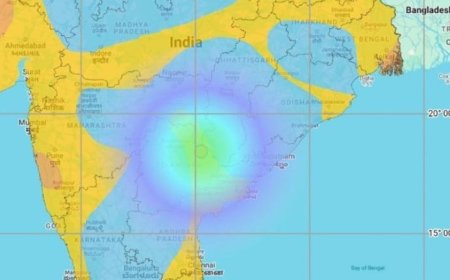New Bat Virus in China Raises Concerns: Possible Threat to Humans?
Researchers in China have identified a new bat coronavirus that has the potential to spread to humans. Could this be another global health crisis? Read on to find out more about its risks, symptoms, and expert warnings.

New Bat Virus in China Raises Concerns: Possible Threat to Humans?
Introduction: A New Health Concern?
- Scientists in China have discovered a new strain of bat coronavirus, sparking global health concerns.
- The virus appears to have the ability to infect humans, raising fears about another potential outbreak.
- This discovery has drawn attention from global health experts and organizations monitoring new virus strains.
- While it is too early to determine whether this virus could lead to another pandemic, research is ongoing to assess its risks.
What Is This New Bat Coronavirus?
- The virus was identified in Chinese bat species during routine surveillance studies.
- Researchers found that the virus belongs to the coronavirus family, which includes SARS and COVID-19.
- Preliminary studies suggest that it can bind to human cells, making human infection a possibility.
- The virus has genetic similarities to previous coronaviruses known to cause respiratory illnesses.
How Was the Virus Discovered?
- Scientists conducting wildlife disease monitoring in China collected samples from bats.
- Genetic sequencing of these samples revealed a previously unknown coronavirus strain.
- This discovery was made as part of ongoing efforts to prevent future zoonotic diseases.
- Researchers are now analyzing the virus’s behavior and its potential to spread.
Could This Virus Infect Humans?
- Early studies indicate that the virus can attach to human cells, increasing infection concerns.
- The presence of ACE2 receptor binding—similar to SARS-CoV-2—raises the risk of human transmission.
- Scientists stress that further testing is required to confirm whether it can jump to humans.
- There is currently no evidence of human-to-human transmission, but precautionary monitoring is in place.
Symptoms and Potential Health Risks
- Since the virus is still under study, its exact symptoms remain unclear.
- However, experts believe it may cause:
- Fever and chills
- Cough and sore throat
- Difficulty breathing (if it affects the lungs)
- Body aches and fatigue
- Gastrointestinal issues (nausea or diarrhea)
- Scientists warn that if the virus spreads, it could lead to respiratory infections similar to other coronaviruses.
How Similar Is It to SARS and COVID-19?
- Genetic analysis shows close similarities between this new virus and SARS-CoV-2.
- Like COVID-19, it originates in bats, which are common carriers of coronaviruses.
- It shares some genetic markers with SARS-CoV-1, which caused the 2003 SARS outbreak.
- While it has not yet spread to humans, scientists are carefully monitoring its evolution.
Can This Lead to Another Pandemic?
- Health experts say it is too early to predict whether this virus will cause an outbreak.
- Key factors that determine pandemic potential:
- Ability to spread between humans (not yet confirmed)
- Severe health impacts (still under research)
- Lack of immunity in humans (could increase risk)
- The World Health Organization (WHO) and virologists are closely tracking its development.
What Are Experts Saying?
- Virologists warn that the world must be prepared for future zoonotic diseases.
- Scientists emphasize early detection and preventive research as crucial steps.
- Experts say that increased surveillance of wildlife viruses is needed to prevent surprises.
- Many stress the importance of international cooperation to prevent outbreaks.
Preventive Measures and Global Response
- Increased virus monitoring: Ongoing research on new coronaviruses in animals.
- Early warning systems: Countries are strengthening disease surveillance programs.
- Public awareness campaigns: Informing people about zoonotic diseases and precautions.
- Strengthened health policies: Governments are preparing for potential outbreaks with advanced response plans.
How Can People Stay Safe?
- Avoid Contact with Wildlife: Limit exposure to wild animals that may carry viruses.
- Follow Hygiene Practices: Wash hands frequently and use sanitizers in public places.
- Stay Informed: Follow health advisories from global and national authorities.
- Support Scientific Research: Encouraging investment in virus detection and vaccine development.
What Comes Next?
- Scientists are conducting further research to understand the mutation risks of this virus.
- Global health agencies are strengthening pandemic preparedness in case of future outbreaks.
- New preventive strategies are being developed to minimize human exposure to emerging viruses.
- Governments and health organizations will continue to monitor and share updates on the situation.
Final Thoughts: Should We Be Worried?
- While this new bat coronavirus has raised concerns, there is no immediate danger to the public.
- Researchers are working to understand its characteristics, and precautions are being taken.
- Early detection gives the world a chance to prevent another crisis before it begins.
- Staying informed, following expert guidance, and supporting scientific efforts will help in managing potential threats.
By remaining vigilant and proactive, the world can prevent future pandemics and ensure global health security.
What's Your Reaction?






































































